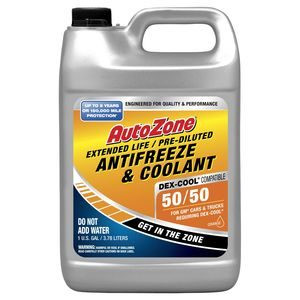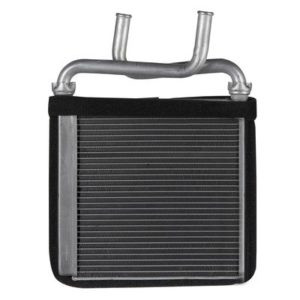How Much Does It Cost To Fix My Car Heater?

Is your car heater blowing cold air? Unsure how much you’ll need to spend to get it fixed? At CARDIAGTECH.NET, we understand the discomfort of a malfunctioning car heater, especially during those chilly months. This guide dives deep into the potential costs and causes of car heater problems, providing you with the knowledge to make informed decisions and keep your vehicle cozy. Learn about heater repair expenses, auto repair costs, and average mechanic fees today.
1. Understanding the Importance of a Functional Car Heater
A working car heater is more than just a comfort feature; it’s crucial for safety. A properly functioning heater ensures:
- Clear Visibility: Defrosts windows, eliminating fog and ice buildup.
- Driver Comfort: Maintains a comfortable cabin temperature, preventing fatigue and improving focus.
- Engine Health: The heating system is linked to the engine’s cooling system, helping to regulate engine temperature.
2. Common Causes of Car Heater Problems
Before diving into the costs, let’s explore the common culprits behind a faulty car heater:
2.1. Low Coolant Level
Coolant (antifreeze) is essential for transferring heat from the engine to the heater core. A low coolant level can be caused by:
- Leaks: Cracked hoses, radiator leaks, or water pump issues.
- Head Gasket Problems: A blown head gasket can cause coolant to leak into the engine.
 Checking car coolant level and potential leaks
Checking car coolant level and potential leaks
2.2. Faulty Thermostat
The thermostat regulates engine temperature. A malfunctioning thermostat can prevent the engine from reaching its optimal operating temperature, hindering the heater’s performance.
2.3. Clogged Heater Core
The heater core is a small radiator that transfers heat into the cabin. It can become clogged with debris and sediment, restricting coolant flow and reducing heat output.
2.4. Blower Motor Issues
The blower motor circulates air through the heater core and into the cabin. A faulty blower motor or blower motor resistor can prevent the heater from working properly.
2.5. Blend Door Problems
Blend doors control the mix of hot and cold air entering the cabin. A broken or malfunctioning blend door can prevent the heater from producing warm air.
2.6. Heater Control Valve Failure
The heater control valve regulates the flow of hot coolant to the heater core. If it fails, it can either block coolant flow entirely or leak, impacting heater performance.
2.7. Plugged Cabin Air Filter
A clogged cabin air filter restricts airflow into the cabin, reducing the amount of warm air that can circulate.
 Inspecting the cabin air filter for debris and blockages
Inspecting the cabin air filter for debris and blockages
3. How Much Does It Cost to Fix My Car Heater? A Detailed Breakdown
The cost to fix a car heater varies significantly depending on the cause of the problem and the make/model of your vehicle. Here’s a breakdown of potential repair costs:
| Repair | Parts Cost | Labor Cost | Total Cost |
|---|---|---|---|
| Replace Cabin Air Filter | $15 – $30 | $15 – $30 | $30 – $60 |
| Fix Coolant Leak | $20 – $200 | $80 – $600 | $100 – $800 |
| Replace Thermostat | $20 – $80 | $50 – $200 | $70 – $280 |
| Flush Heater Core | $30 – $50 (Coolant) | $50 – $150 | $80 – $200 |
| Replace Blower Motor | $50 – $200 | $80 – $250 | $130 – $450 |
| Replace Blower Motor Resistor | $20 – $80 | $50 – $150 | $70 – $230 |
| Repair/Replace Blend Door Actuator | $50 – $200 | $100 – $400 | $150 – $600 |
| Replace Heater Control Valve | $30 – $100 | $80 – $250 | $110 – $350 |
| Replace Heater Core | $80 – $300 | $500 – $1200 | $580 – $1500 |
Please Note: These are estimated costs. Actual prices may vary depending on your location, the specific repair shop, and the complexity of the repair.
4. Factors Affecting Car Heater Repair Costs
Several factors can influence the final cost of your car heater repair:
- Vehicle Make and Model: Luxury vehicles and those with complex heating systems tend to have higher repair costs.
- Type of Repair: Simple repairs like replacing a cabin air filter are inexpensive, while complex jobs like replacing the heater core can be quite costly.
- Labor Rates: Mechanic labor rates vary depending on location and the shop’s expertise.
- Parts Availability: Some parts may be more difficult to find or more expensive depending on the vehicle and the part’s manufacturer.
- Diagnostic Fees: Most shops charge a diagnostic fee to determine the cause of the problem. This fee may be waived if you proceed with the repair at their shop.
5. Step-by-Step Guide to Diagnosing and Potentially Fixing Your Car Heater
Before heading to a mechanic, you can perform some basic troubleshooting steps:
- Check Coolant Level: Ensure the coolant level is within the recommended range. If low, add the appropriate coolant type.
- Inspect for Leaks: Look for any signs of coolant leaks under the vehicle or around the engine.
- Check Cabin Air Filter: Remove the cabin air filter and inspect it for dirt and debris. Replace if necessary.
- Test Blower Motor: Turn the heater on to different fan speeds. If the blower motor doesn’t work at all or only works on some speeds, it may be faulty.
- Listen for Blend Door Actuator: Turn the temperature control from hot to cold and listen for any clicking or grinding noises behind the dashboard. This could indicate a blend door actuator problem.
6. DIY vs. Professional Repair: Which is Right for You?
Deciding whether to tackle a car heater repair yourself or take it to a professional depends on your mechanical skills, available tools, and the complexity of the repair.
DIY Repair:
- Pros: Can save money on labor costs.
- Cons: Requires mechanical knowledge, tools, and time. Can be risky if not done properly.
Professional Repair:
- Pros: Ensures the repair is done correctly and efficiently. Provides a warranty on parts and labor.
- Cons: Can be more expensive than DIY repair.
When to Choose Professional Repair:
- Complex repairs like replacing the heater core or diagnosing electrical problems.
- You lack the necessary tools or experience.
- You’re uncomfortable working on your car’s heating system.
7. Maintaining Your Car’s Heating System for Optimal Performance
Preventative maintenance can help extend the life of your car’s heating system and prevent costly repairs:
- Regular Coolant Flushes: Flush the coolant system every 2-3 years to remove sediment and debris.
- Inspect Hoses and Clamps: Regularly inspect coolant hoses and clamps for leaks or damage.
- Replace Cabin Air Filter: Replace the cabin air filter annually or as needed.
- Check Thermostat Function: Ensure the engine reaches its operating temperature quickly and efficiently.
- Run the Heater Periodically: Even during warm months, run the heater for a few minutes each month to prevent the heater core from clogging.
8. The Role of Coolant in Your Car’s Heating System
Coolant, also known as antifreeze, plays a vital role in your car’s heating system. It’s responsible for:
- Heat Transfer: Absorbing heat from the engine and transferring it to the heater core.
- Freeze Protection: Preventing the coolant from freezing in cold weather.
- Corrosion Prevention: Protecting the engine and cooling system components from corrosion.
Types of Coolant:
- Conventional Green Coolant: The traditional type of coolant, suitable for older vehicles.
- OAT (Organic Acid Technology) Coolant: Long-life coolant, typically orange or yellow, suitable for newer vehicles.
- HOAT (Hybrid Organic Acid Technology) Coolant: A hybrid of OAT and conventional coolant, suitable for a wide range of vehicles.
Important Note: Always use the correct type of coolant recommended by your vehicle manufacturer. Mixing different types of coolant can damage your cooling system.
9. Understanding the Heater Core: The Heart of Your Car’s Heating System
The heater core is a small radiator located behind the dashboard. It’s responsible for:
- Heat Exchange: Receiving hot coolant from the engine and transferring heat to the air flowing through it.
- Cabin Heating: Providing warm air to the cabin through the vents.
Symptoms of a Faulty Heater Core:
- Sweet Smell in Cabin: A sweet, antifreeze smell in the cabin when the heater is running.
- Foggy Windows: Oily residue on the inside of the windows.
- Low Coolant Level: A constantly decreasing coolant level without any visible leaks.
- Overheating: The engine may overheat due to reduced coolant flow.
 Examining a blocked heater core restricting proper coolant flow
Examining a blocked heater core restricting proper coolant flow
10. The Blower Motor and Resistor: Essential Components for Air Circulation
The blower motor is responsible for:
- Air Circulation: Forcing air through the heater core and into the cabin.
Symptoms of a Faulty Blower Motor:
- No Airflow: No air coming out of the vents when the heater is turned on.
- Weak Airflow: Reduced airflow, even on the highest fan setting.
- Noisy Blower Motor: Unusual noises coming from behind the dashboard.
The Blower Motor Resistor:
The blower motor resistor controls the fan speed.
Symptoms of a Faulty Blower Motor Resistor:
- Only One Fan Speed Works: The blower motor only works on one speed, typically the highest setting.
- No Fan Speed Works: The blower motor doesn’t work on any speed.
11. Decoding Blend Door Actuators: Ensuring Proper Temperature Control
Blend door actuators are small electric motors that control the position of the blend doors.
Symptoms of a Faulty Blend Door Actuator:
- Inconsistent Temperatures: The temperature in the cabin is not consistent with the temperature setting.
- Clicking Noises: Clicking or grinding noises coming from behind the dashboard when adjusting the temperature.
- One Side Blows Cold, One Side Blows Hot: Dual-zone climate control systems may have one side blowing cold air while the other side blows hot air.
12. The Thermostat’s Critical Role in Engine and Heater Performance
The thermostat is a crucial component that regulates engine temperature.
Symptoms of a Faulty Thermostat:
- Engine Overheating: The engine overheats quickly, or the temperature gauge reads high.
- Engine Not Reaching Operating Temperature: The engine takes a long time to warm up, or the temperature gauge reads low.
- Poor Heater Performance: The heater blows cold air, or the air is not as warm as it should be.
13. Finding a Reputable Mechanic for Your Car Heater Repair
Choosing the right mechanic is crucial for a successful car heater repair. Here are some tips:
- Ask for Recommendations: Ask friends, family, or colleagues for recommendations.
- Read Online Reviews: Check online review sites like Google, Yelp, or the Better Business Bureau.
- Check for Certifications: Look for mechanics certified by ASE (Automotive Service Excellence).
- Get Multiple Quotes: Get quotes from several different shops before making a decision.
- Ask About Warranties: Inquire about warranties on parts and labor.
14. CARDIAGTECH.NET: Your Partner in Automotive Diagnostics and Repair Solutions
At CARDIAGTECH.NET, we understand the challenges you face as auto repair professionals. From physical demands and constant exposure to harsh chemicals to the pressure of keeping up with ever-evolving automotive technology, we know your job isn’t easy. That’s why we’re dedicated to providing you with high-quality diagnostic tools and equipment to enhance your efficiency, accuracy, and overall shop profitability.
How CARDIAGTECH.NET Helps You:
- Advanced Diagnostic Tools: Our range of diagnostic tools helps you quickly identify and resolve car heater issues, reducing repair time and improving customer satisfaction.
- Comprehensive Equipment Solutions: We offer a wide selection of equipment to meet your specific needs, from coolant testers to pressure testers.
- Expert Support: Our team of experienced professionals is available to provide technical support and guidance.
- Increased Efficiency: By using our tools, you can diagnose problems more quickly and accurately, reducing downtime and increasing shop productivity.
- Enhanced Accuracy: Our advanced diagnostic tools provide precise readings, helping you avoid costly mistakes and ensure accurate repairs.
- Improved Profitability: By increasing efficiency and accuracy, you can take on more jobs and improve your shop’s bottom line.
15. Call to Action: Let CARDIAGTECH.NET Equip You for Success
Are you ready to take your auto repair business to the next level? Contact CARDIAGTECH.NET today to learn more about our diagnostic tools and equipment solutions.
We Can Help You:
- Enhance your efficiency and reduce repair times.
- Increase accuracy and minimize errors.
- Improve customer satisfaction and build a loyal clientele.
- Boost your revenue and maximize profitability.
Contact Us Today:
- Address: 276 Reock St, City of Orange, NJ 07050, United States
- WhatsApp: +1 (641) 206-8880
- Website: CARDIAGTECH.NET
Don’t let outdated tools hold you back. Invest in the best, and let CARDIAGTECH.NET help you thrive in today’s competitive auto repair industry.
16. FAQs About Car Heater Repair
-
Why is my car heater blowing cold air?
Several factors can cause this, including low coolant level, a faulty thermostat, a clogged heater core, a bad blower motor, or blend door issues.
-
How much does it cost to replace a heater core?
Heater core replacement costs can range from $580 to $1500, depending on the vehicle and labor rates.
-
Can I fix my car heater myself?
Simple repairs like replacing the cabin air filter or thermostat can be done yourself. More complex repairs should be left to a professional.
-
How often should I flush my car’s coolant?
It’s recommended to flush your car’s coolant every 2-3 years or as recommended by your vehicle manufacturer.
-
What type of coolant should I use in my car?
Always use the type of coolant recommended by your vehicle manufacturer.
-
How do I know if my thermostat is bad?
Symptoms of a bad thermostat include engine overheating, the engine not reaching operating temperature, and poor heater performance.
-
What is a blend door actuator?
A blend door actuator controls the mix of hot and cold air entering the cabin.
-
How do I find a reputable mechanic?
Ask for recommendations, read online reviews, check for certifications, and get multiple quotes.
-
What is the heater control valve?
The heater control valve regulates the flow of hot coolant to the heater core.
-
Can a clogged cabin air filter affect my car heater?
Yes, a clogged cabin air filter restricts airflow into the cabin, reducing the amount of warm air that can circulate.





